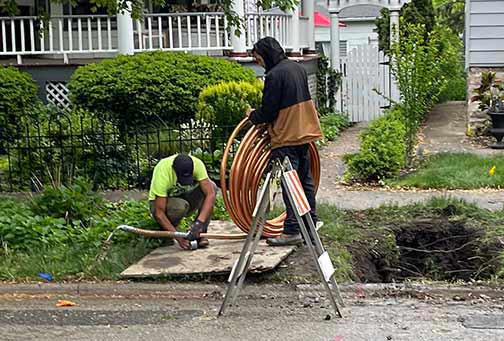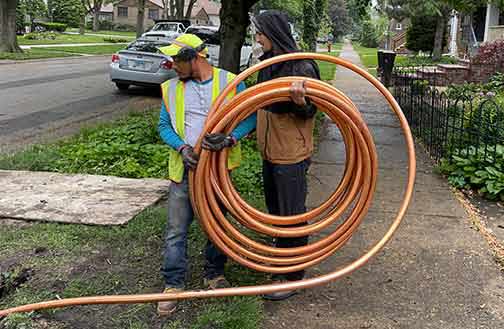
Your main water line is the large pipe that transports water from the city supply into your home. The water that flows through this line makes all the plumbing functions in your home possible.
If the main water line is damaged, your home’s water supply will be reduced or stopped. A broken main water line can also contaminate your water supply, explains SGI Phoenix Management.
Most times, the correct solution for problems affecting the main water line is to repair the line. But sometimes, the damage is so bad that replacing the line is the option that makes economic sense.
What are the signs that your main water line is due for replacement? What do you need to know to ensure the smooth completion of this project?
If your water line is broken and you ask these questions, you will find the answers in this post.
4 signs that your main water line needs to be replaced
Low water pressure
A sudden and sharp fall in water pressure signifies a major leak in your main water line. This problem also comes from the narrowing of the pipe channel due to corrosion and aging. Obstructions – mineral deposits and debris from the water supply – can also clog the main water line, causing a drop in your home’s water pressure.
Strange spikes in your water bill
If your water bill has increased and not because your home’s water supply pattern has changed or the water company has increased its rates, you may suspect a leak in your main water line. A broken section of the line could be discharging water into the soil, causing a strange spike in your water bill.
Frequent leaks
An occasional leak is not enough reason to think your main water line is irreparably damaged. However, if you have had two, three or four leaks back-to-back, your water line may be in trouble. An old and brittle water line will leak more often. Fixing such a line wastes money; it should be replaced.
Discolored or smelly water
If your water line is made of galvanized steel, orange-colored water in your home or orange-colored debris inside the water supply shows that the pipe is disintegrating. Any strange color or odor in your water supply means that soil is getting into the pipe through a leak, the pipe is badly-corroded, or it has a lot of sediment inside it.
How to be sure that you need a main water line replacement
How can you be sure if the damage to the water line is bad enough to require you to replace the line? The only way to ensure that this is the right option for you is to have a professional plumber inspect the line. You may want to get the opinions of at least two plumbers.

What you should know about main water line replacement
You typically have three pipe materials to choose from when replacing a main water line: copper, PEX and CPVC.
Copper is the most reliable pipe material for water lines. It does a good job of withstanding leaks, doesn’t add pollutants to water and has a long lifespan.
PEX piping is stronger and more flexible than the average plastic piping. It will not burst even if the water inside it freezes; the pipe expands.
CPVC is a more common type of plastic piping. Its main advantage is its resistance to rust and corrosion. CPVC is relatively cheap compared to the other two options.
Overall, copper is the best material for your water line. Unlike plastic, it is not vulnerable to rodent attacks. Copper pipes are more damage-resistant and have a larger inner diameter than plastic pipes. When buying copper pipes for the best quality, get them from a plumbing supplier instead of a hardware store.
Main water line replacement methods
To replace the water line, you can use a traditional or trenchless method.
Traditional pipe replacement methods
This method involves digging up the existing water line before replacing it with a new one. The process takes time and can cause severe damage to landscaping and other features in the water line pathway.
If you use this method, you must factor in the cost of these additional repairs. That said, traditional methods offer more control and pipes laid using this method are more reliable over time. The initial higher cost of this method is offset by the lower line maintenance cost.
Trenchless pipe replacement methods
This method helps you insert a new pipe into the existing water line without digging it up. This method is fast, efficient and less disruptive. Since it does not involve digging, there is no damage to your landscaping or the surrounding area.
That makes trenchless pipe repair a more affordable option. However, you cannot use this method in every situation.
What is the best pipe replacement method for your home, and what pipe material should you buy? An experienced plumber can help you answer these questions. A plumber can also inspect your line to help you decide if you need a water line replacement.

